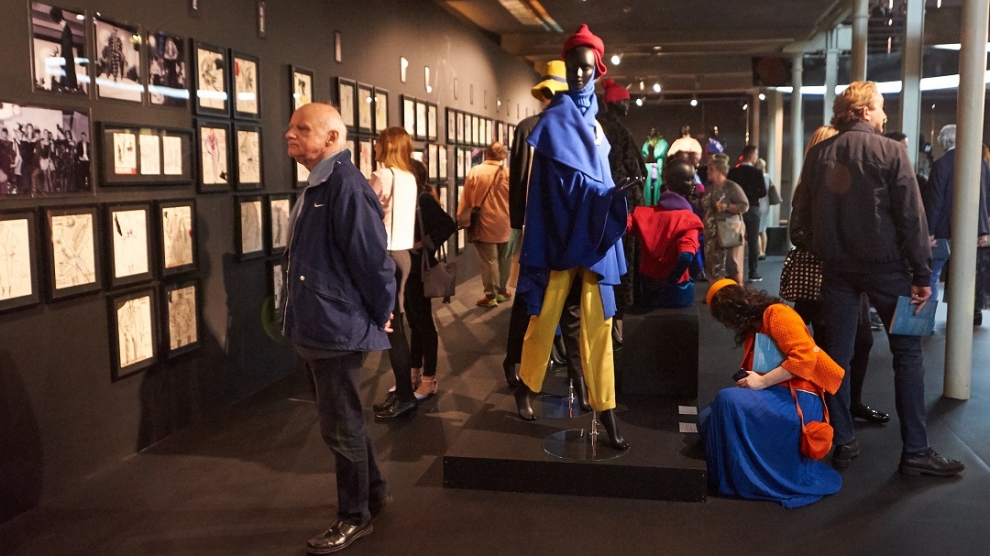The Polish Coco Channel, or the Empress of Polish fashion, are just two of the titles Jadwiga Grabowska was given.
Teresa Kuczyńska wrote in Ty i Ja magazine in August 1968: “This is a person who became a legend. She has as many friends as she has enemies. A woman of exceptional energy, who dominates everything that surrounds her.”
“Always elegant and well-mannered, but she aroused fear among designers and models as well as party dignitaries as she would throw ashtrays at them. Behind the iron curtain she shaped trends in Parisian fashion and demanded chic on the grey streets of Poland,” wrote Polish news portal Natemat.pl.
“I thought that for the sake of a psychological rebirth, it was incredibly important to form a conviction that in spite of all the atrocities that had taken place, and in spite of what was still so difficult, it was necessary to live normally, to live life in its fullness, which also encompasses dress and fashion,” Ms Grabowska explained in interviews.
A fashion icon herself, Ms Grabowska always seen in Chanel suits and a turban, wanted to do more for women in Poland following its destruction after World War II:
“After the war, Warsaw was destroyed, and women were left behind. Someone had to think about them. This is why I chose to work as a fashion designer,” Ms Grabowska said in an interview for Kurier Polski, which was released posthumously in January 1989 (she died in December 1988).
Following the end of the war in 1945, Ms Grabowska opened a small boutique in the centre of Warsaw called Feniks (Phoenix).
“It turned out that there was a demand not just for finished clothing. My customers started inquiring about making clothes to order and alterations. So I also opened a workshop and hired the best seamstresses I had known before the war and who I managed to track down. I called that workshop Feniks, as it came back to life in that poor, ash ridden, burnt down Warsaw,” she once explained in an interview.
The boutique became an instant success. However, due to the political situation in the People’s Republic of Poland, many private business owners had their property confiscated, and in 1947 Ms Grabowska also fell victim to the regime.
Yet this did not stop her, she was subsequently hired as an Arts Director of Moda Damska (Women’s Fashion), which subsequently went through several transformations and in 1958 the Moda Polska (Polish Fashion) fashion house was born, with Ms Grabowska as director of the company.
“Moda Polska used to be more than just the clothing brand we know today. Navigating the complex reality of the centrally planned economy, thanks to its charismatic designers, it introduced female Poles to the world of sophisticated and practical fashion,” explains Poland.pl.
In the 1960s Ms Grabowska came across a young man, Jerzy Antkowiak, who would become later become the most famous designer of the Moda Polska fashion house and probably the most charismatic fashion designer of the Polish People’s Republic.
Mr Antkowiak started off as an assistant, and soon rose to the top of Moda Polska.
To commemorate 60 years since the establishment of Moda Polska, the Central Museum of Textiles in Łódź is currently hosting a grand exhibition dedicated to Jerzy Antkowiak – Moda Polska. The exhibition has been curated by Tomasz Ossoliński, who is also the producer of the documentary about Mr Antkowiak, which will premier in early 2019. Both projects have been supported by Vogue.
Jerzy Antkowiak – Moda Polska will be open daily (except Mondays) at The Central Museum of Textiles at ul. Piotrkowska 282, Łodz, until March 17.
—






Add Comment